Not a bad joke, but a long hatched plan that recently saw the light of day.
Tales of oxygen deprived passes, pandas and even kebabs had prompted much research into what lies west of Chengdu.
Due to the Dragon Boat Festival, what had originally been planned as a 2 day trip, now morphed into a four day opportunity to explore the best of western Sichuan.
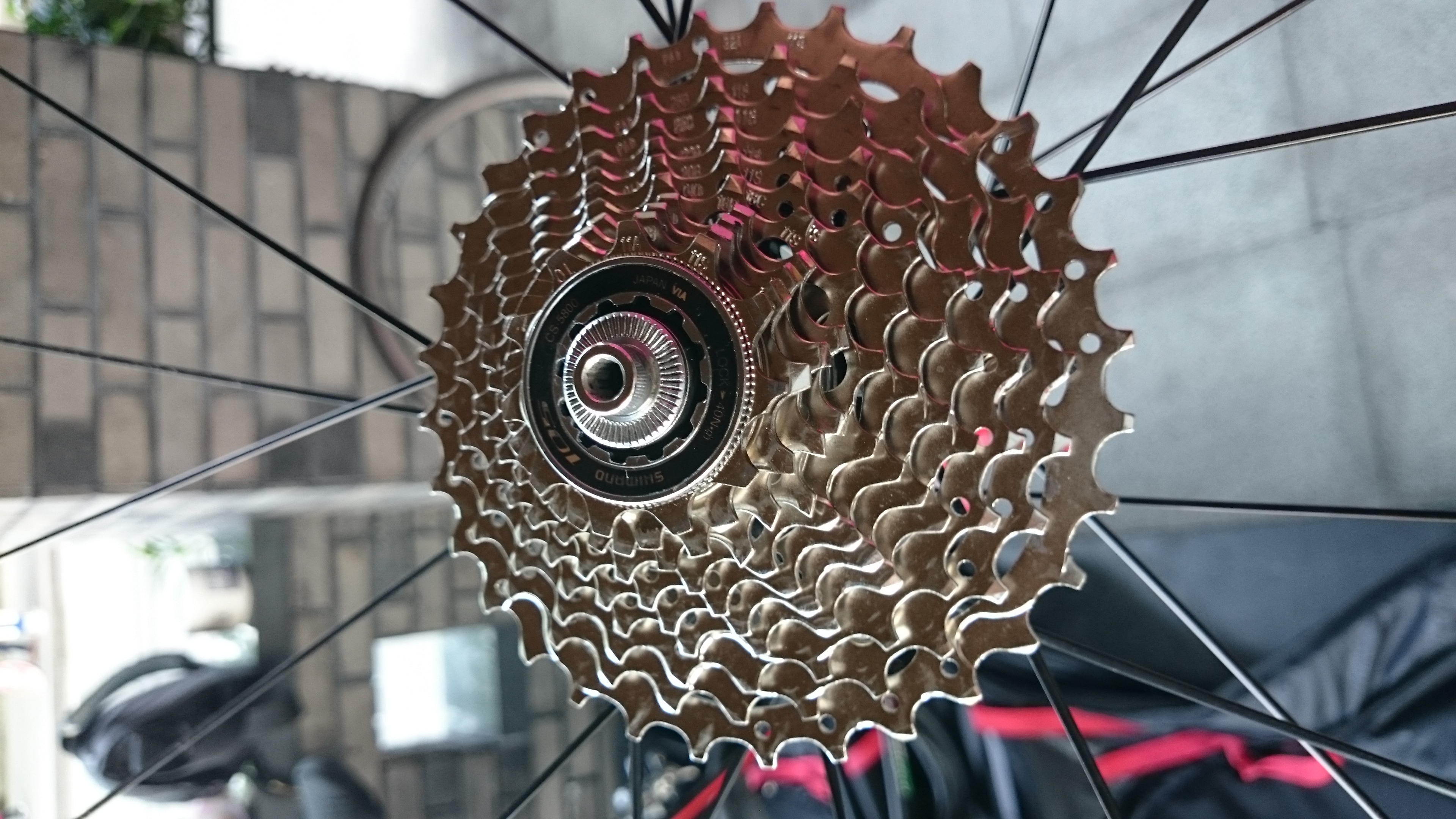
Day 1 Dujiangyan to Wolong, 86km, 1,800m
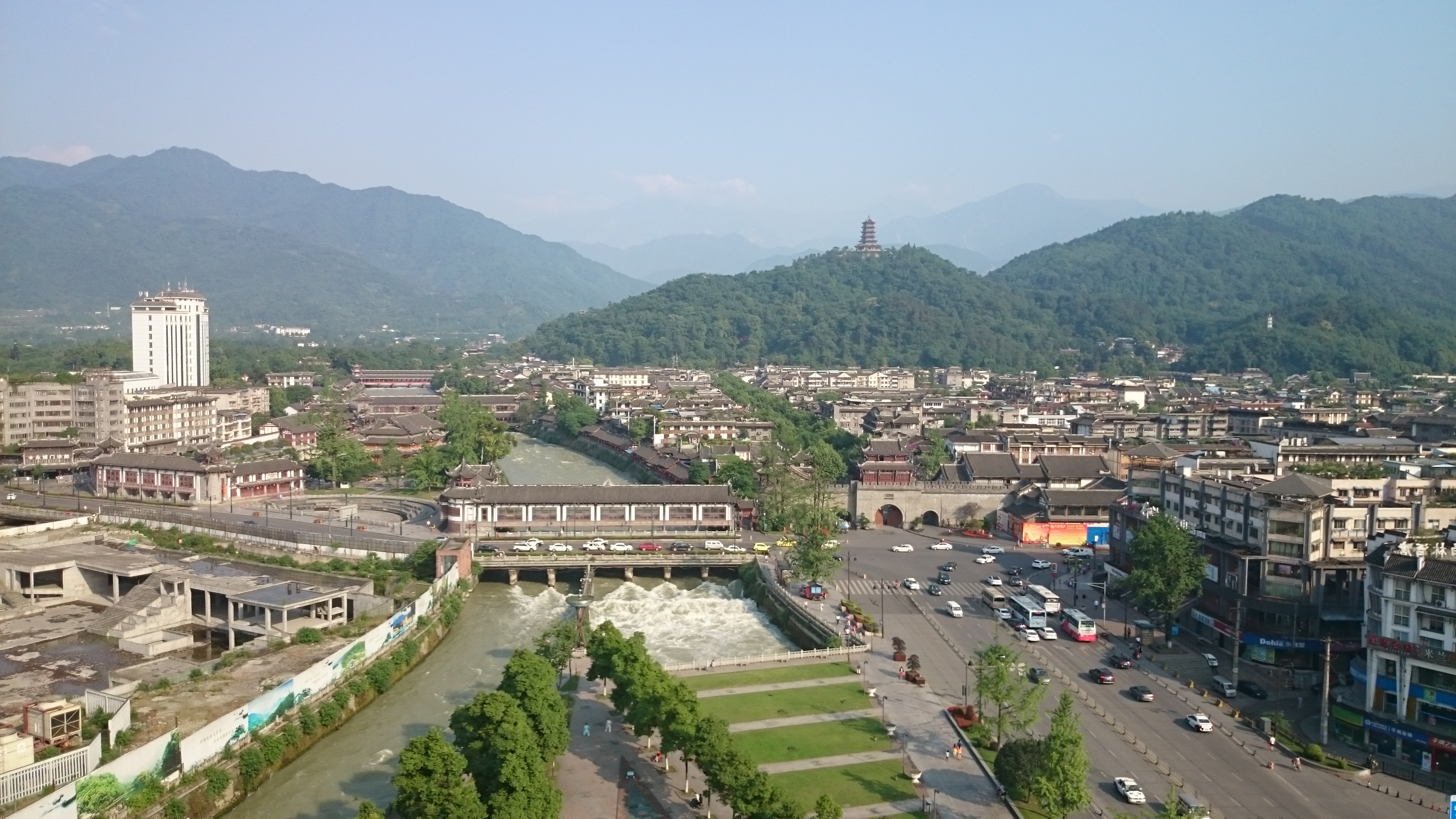
The extra day that the schedule afforded, allowed for a less aggressive acclimatisation approach. As such the first day started a little lower, just 60km from the airport at Dujiangyan.
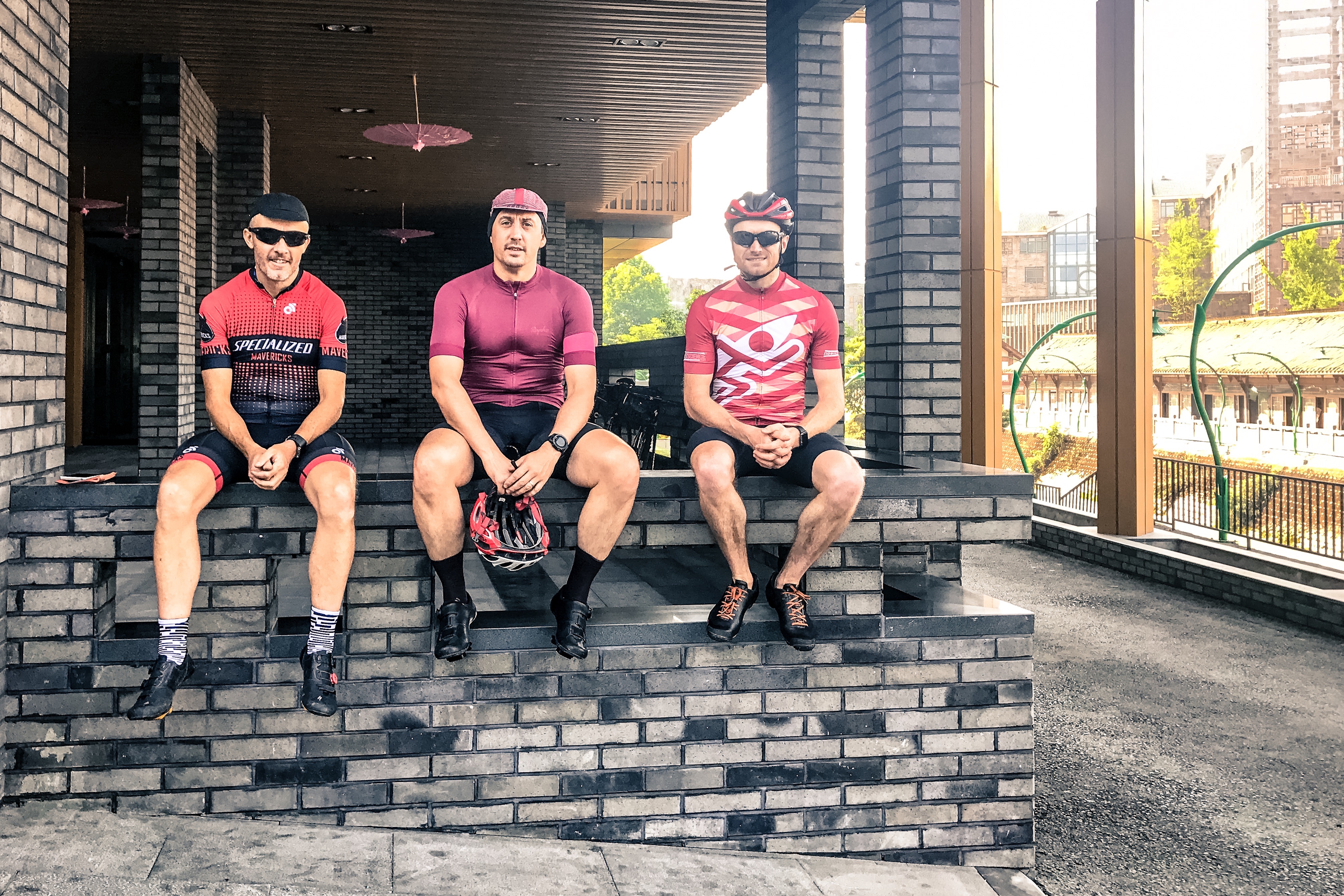
The day would only entail a 90km ‘warm up’ ride, with the hope of catching some panda action towards the end of the day. Although easier on paper, this would still necessitate some significant elevation gain.
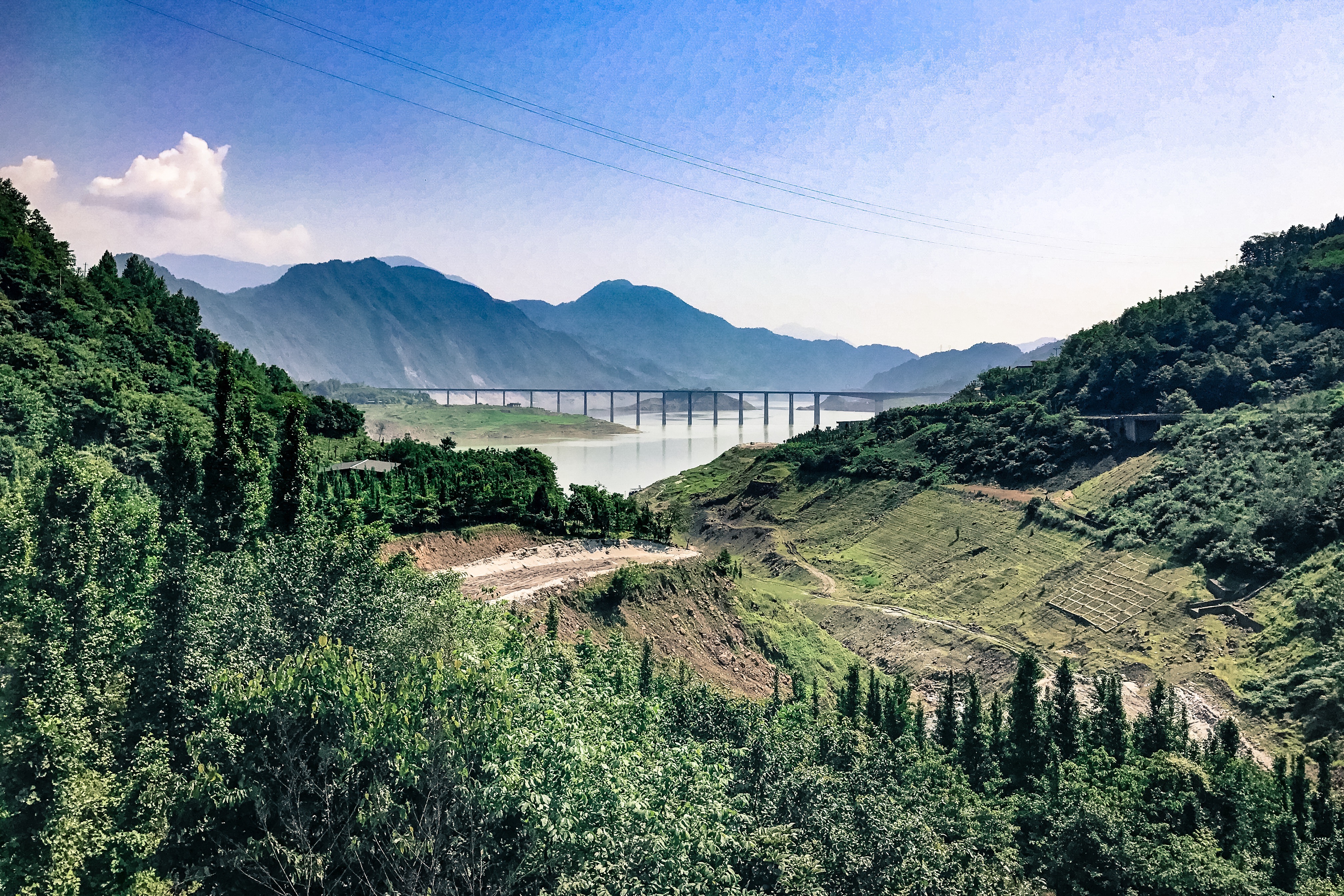
The area bore the brunt of the Wenchuan 2008 earthquake, but the only real legacy of this was Beichuan Earthquake Museum enroute, as well as numerous HK flagged plaques, referencing donations made from the SAR that funded a significant amount of the rebuilding that was evident everywhere.
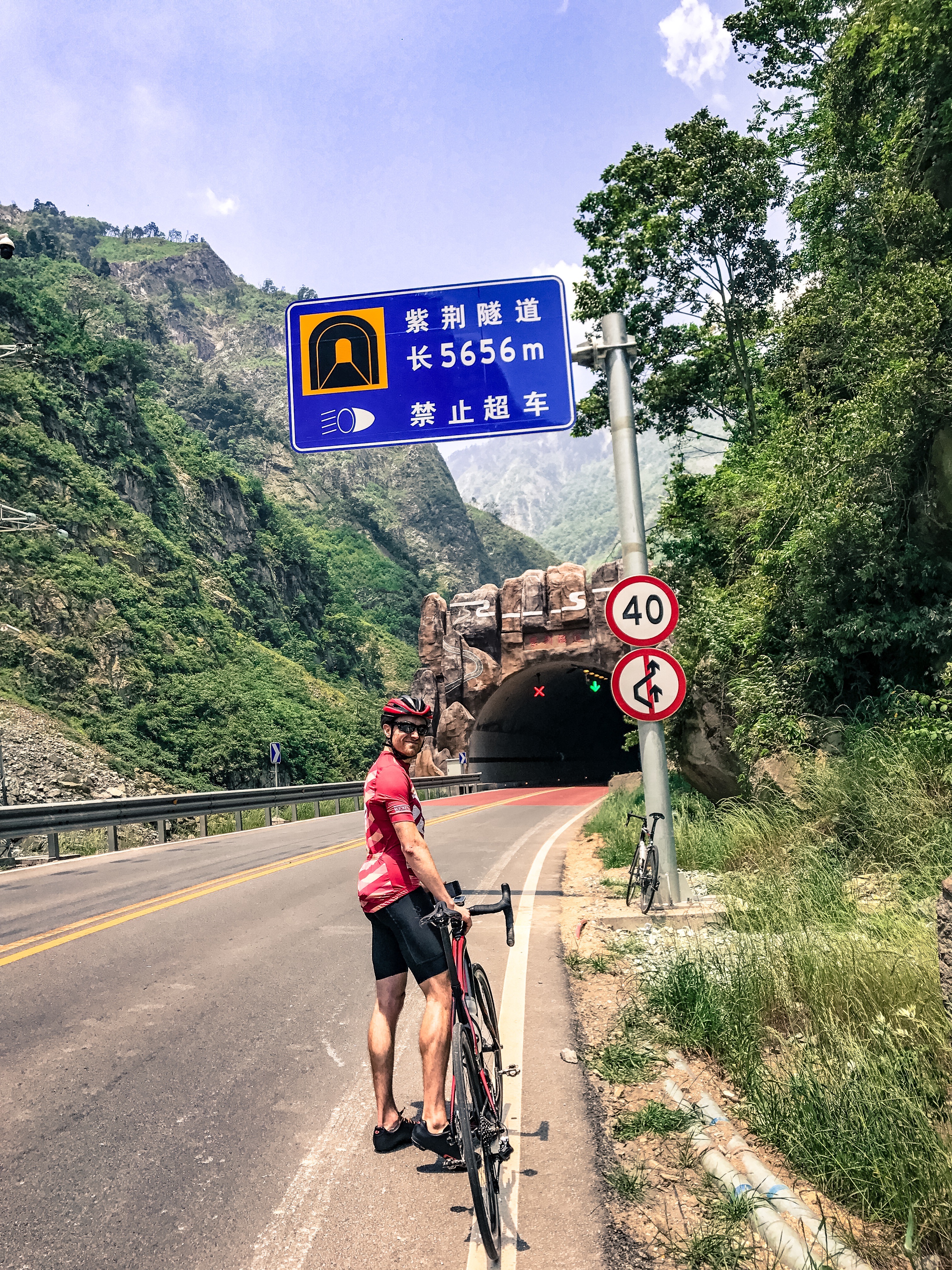
The new roads were also dominated by tunnels, that made the ones under the Huangpu seem like a sprint. There were more than 15km of damp but well lit tunnels, with a couple in excess of 5km.
Although tunnels optimise car user’s journeys, they are not always a primary goal for the cyclist seeking elevation. As such one tunnel was skipped just before Xuankou, for an Alpe D’Huez-esque hairpinned up and over.
The earthquake had also necessitated a rethink on the several panda reserves in the area. With the previously long established one at Wolong, now relocating to Gengda.
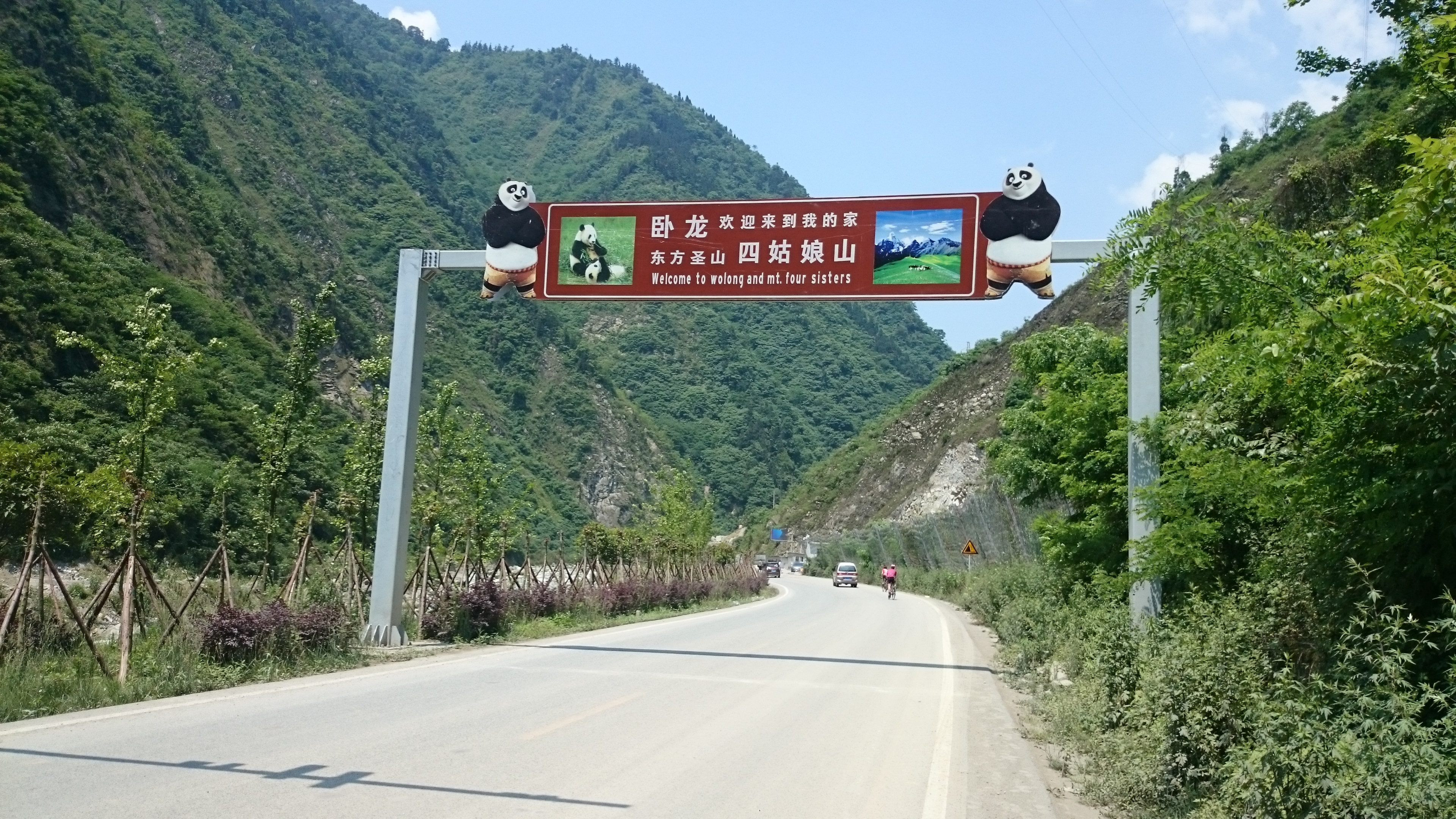
This was to be the lunch stop, with the hope of catching some panda action in the afternoon. It was nice of the reserve to build a 2km, 10% ramp up to the reserve, but disappointing to hear at the gate that there was only one panda out and about, due to it being unseasonably hot.
After deciding to take a punt and initially just being rewarded with panda arses, hanging out of their panda houses; the serving of afternoon ‘tea’, soon prompted more and more bears to emerge from their homes. With only 240 pandas living in capacity in China, getting a chance to see more than 10% of this population in an afternoon was pretty special.
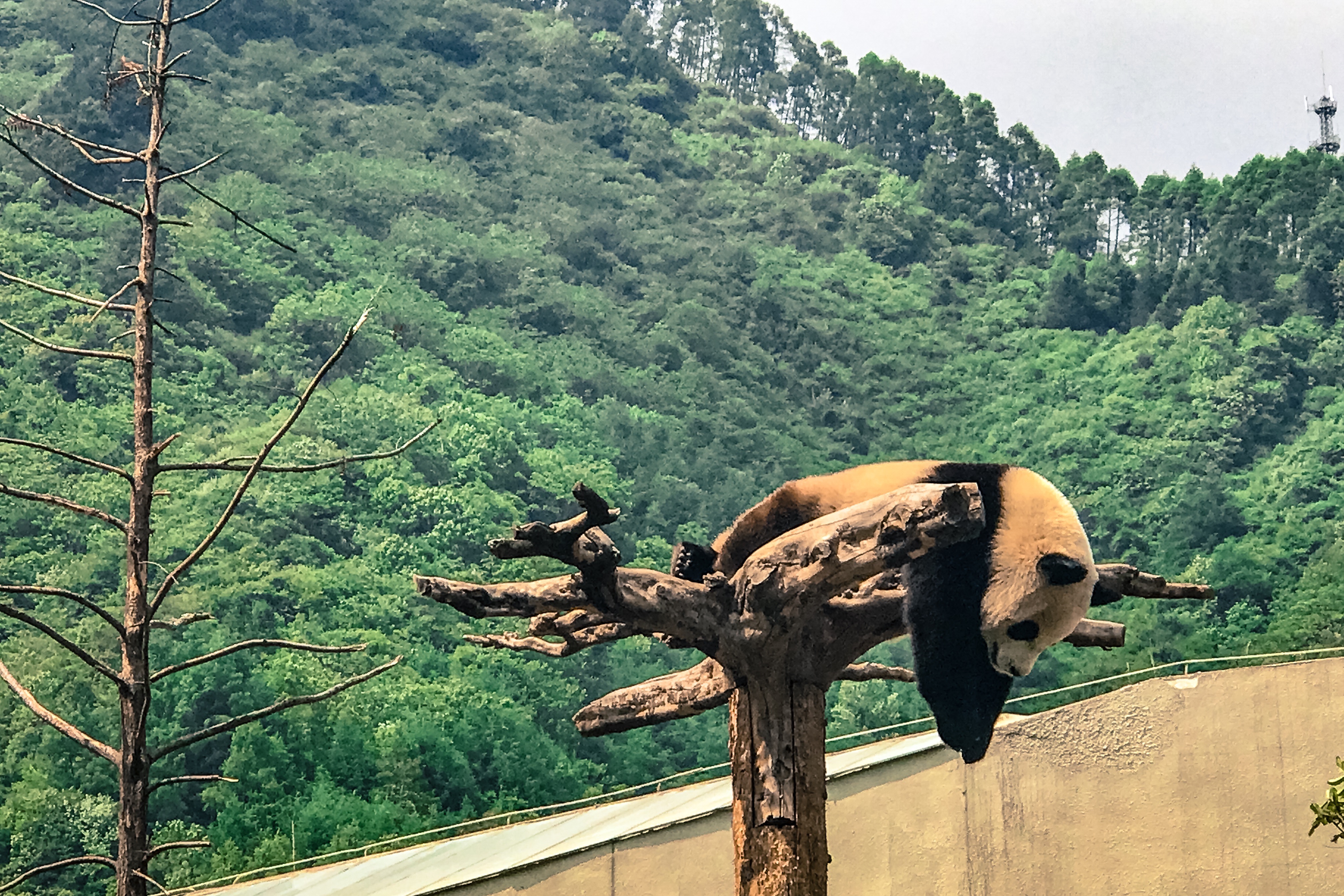
A short ride then ensued, up to Wolong for the overnight stop.
Day 2 Wolong to Dawei, 119km, 2,600m
This was the main day. The primary reason for travelling so far west. Balang Shan is the main pass the S303 encounters as it cuts it’s way through the Qionglai mountains. The fact that Balang Shan was listed on the almanac that is dangerous roads, just added further impetus to the challenge, although it did also come with a certain sense of trepidation.
The climb would involve 69 glorious kilometres of climbing, culminating in the 4,500m pass itself. Speculation had been rife on the type of weather that would be encountered; ranging from glorious sunshine and magnificent views over nearby Mount Siguniang (四姑娘山), through to snow and a sub zero climate.
The day started ominously with light rain, necessitating jackets, tights and overshoes. Fortunately, it did not hang around for too long and the roads started to dry out, as the climbing km’s were knocked out.
The route was split into two broad parts; a steady 30km climb along the river, similar to the final leg yesterday from Gengda to Wolong, then 39km of switchbacks that would see the road zig zag up to the pass.
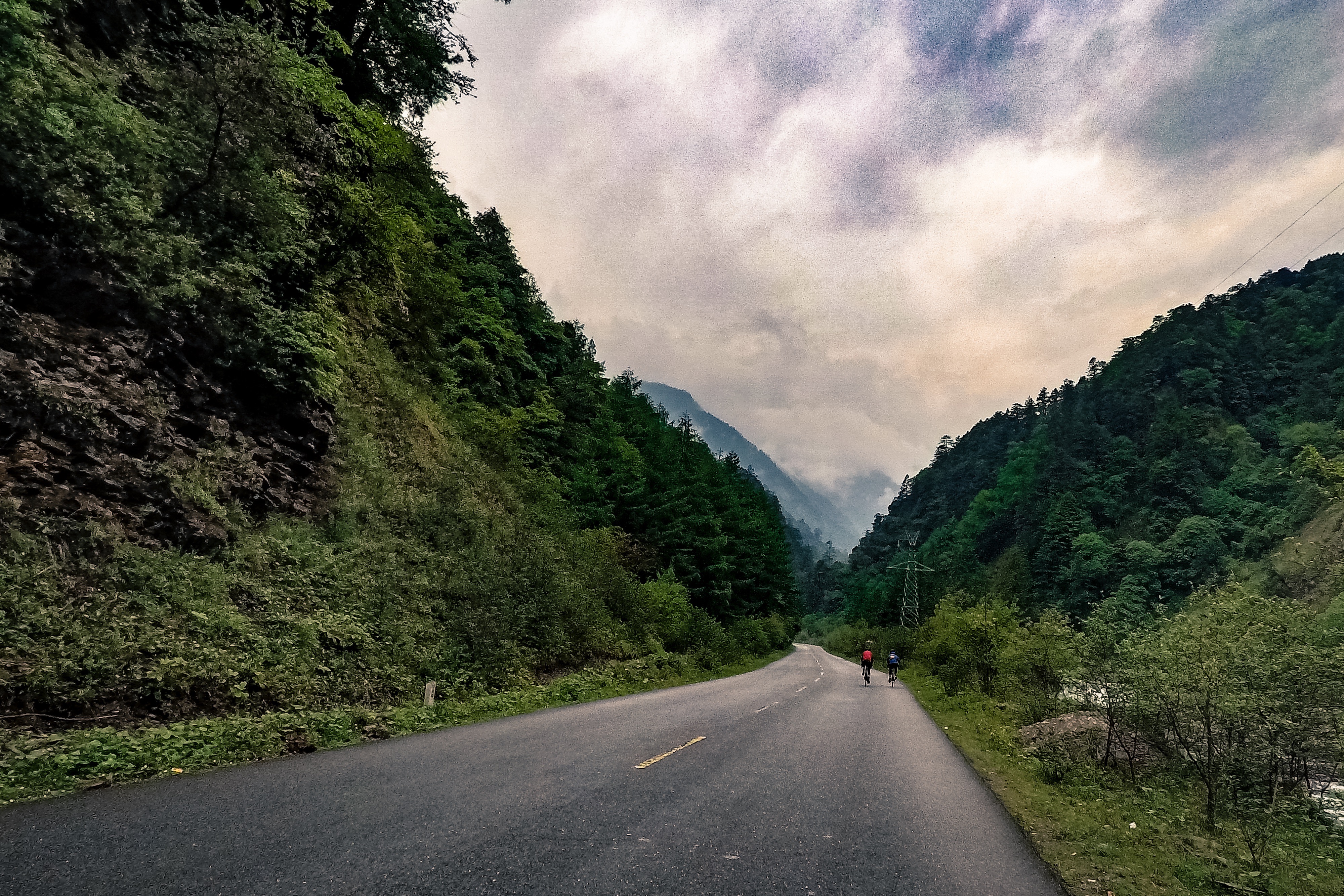
The first section went relatively smoothly. The enormity of the task was reflected in feeling particularly smug at maintaining an average of 20kph for it; knowing this would rapidily drop once the switchback section was reached.
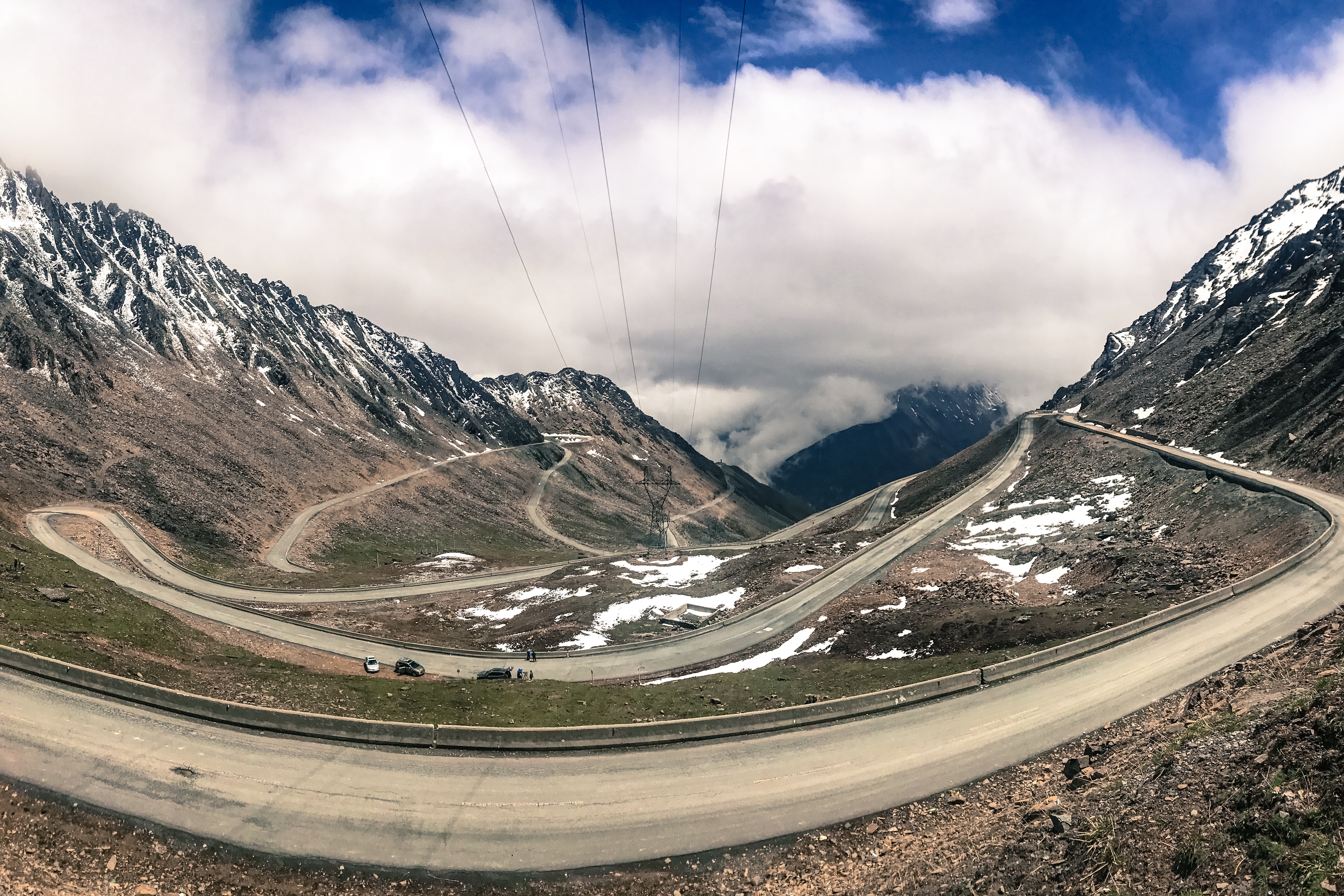
The threat of the altitude was ever present; with a recognition of not if it would kick in; but when it would start to restrict the respiratory system.
Sure enough between 3,000 and 3,500m, the impact of the elevation became noticeable. No single obvious effect, but instead manifesting itself as; occasional light headedness, shortness of breath just from taking a drink and inability to crank up the heart rate.
Although the temperature was progressively dropping, it never reached single digits, which fortunately made for one less element to battle.
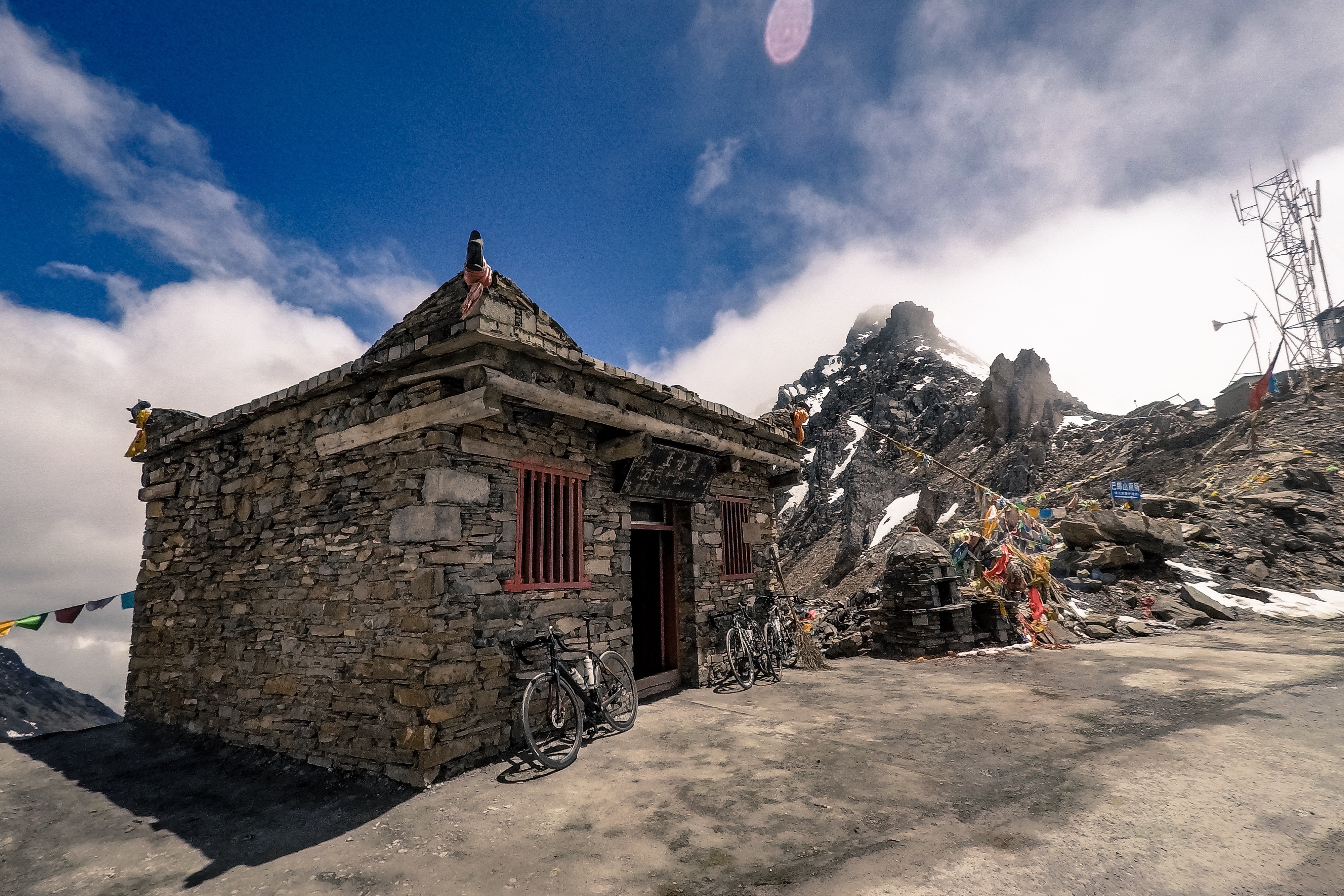
Eventually after more than 5 hours of climbing the summit was reached. A sense of accomplishment and relief by all. Due to cloud cover, there were no decent views out over Siguniang Shan. The search for the four maidens would be to avail.
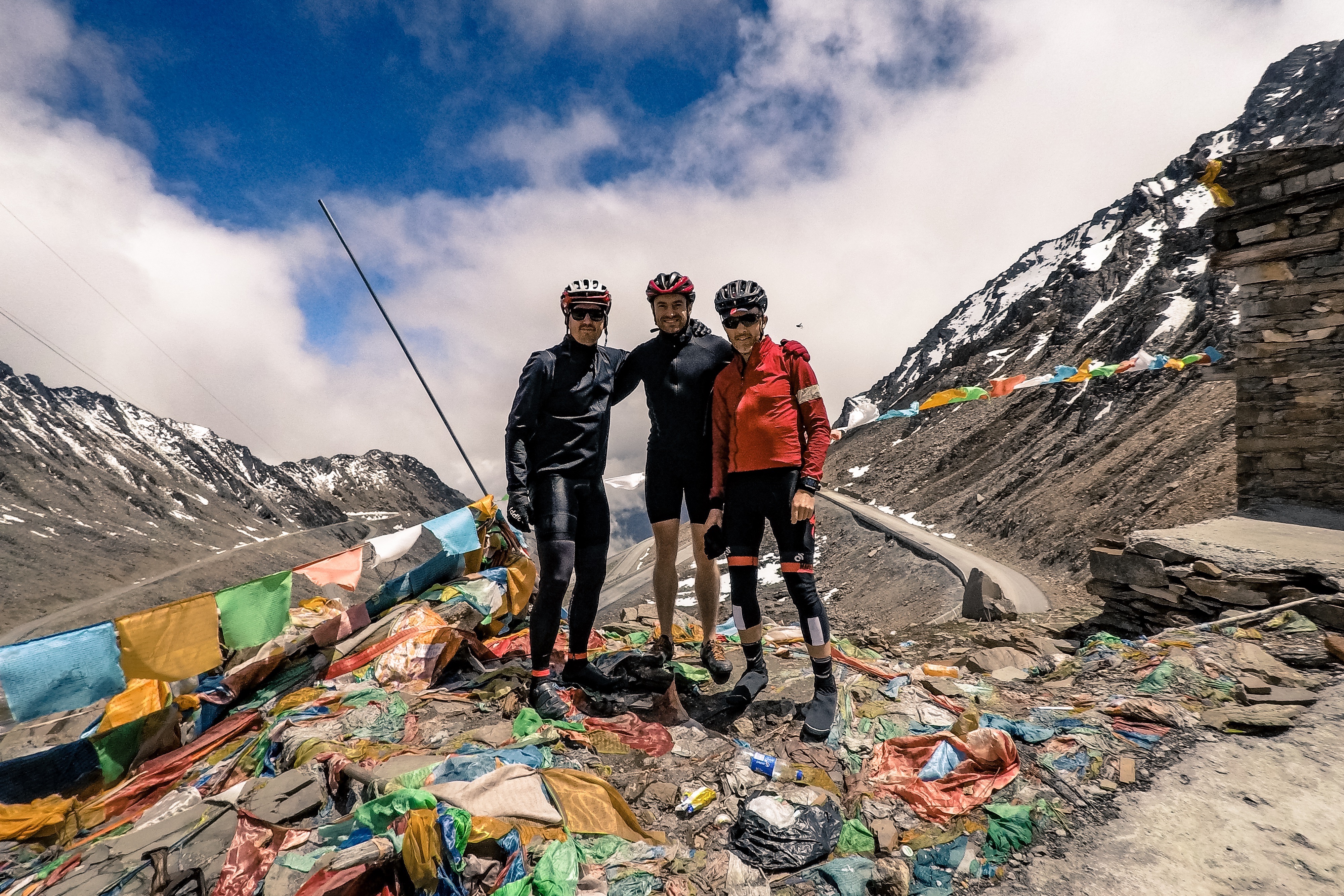
Further layering up was required, before embarking on the descent into Rilong, where a very welcome lunch awaited.
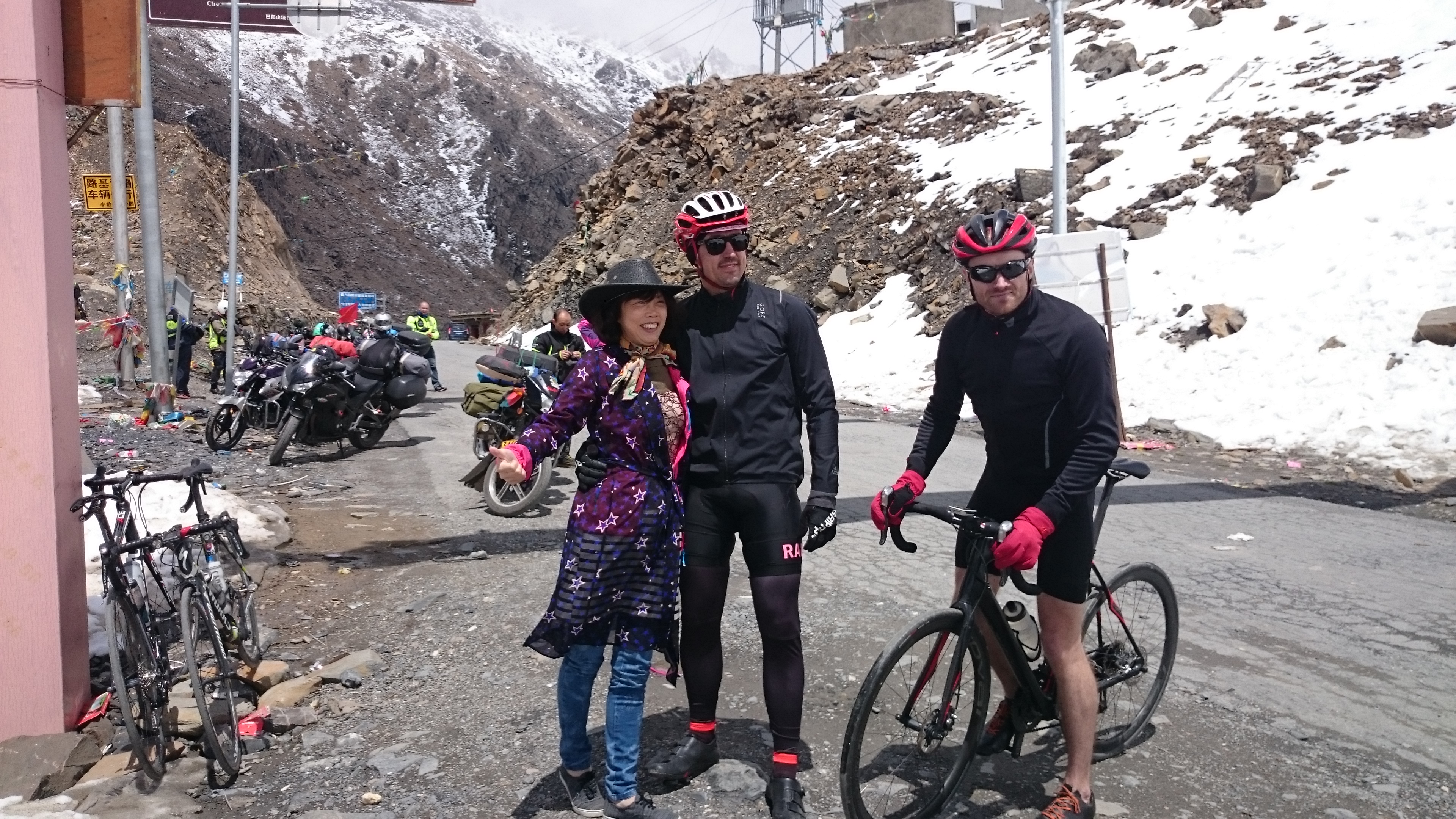
More downhill ensued to the overnight stop in Dawei.
Day 3 Dawei to Lushan, 172km, 1,700m
Another day, another 4,000m pass, but this time with the prospect of kebabs at the top of Jiajinshan (夹金山) and perhaps the worlds longest descent down to Lushan, at over 130km.
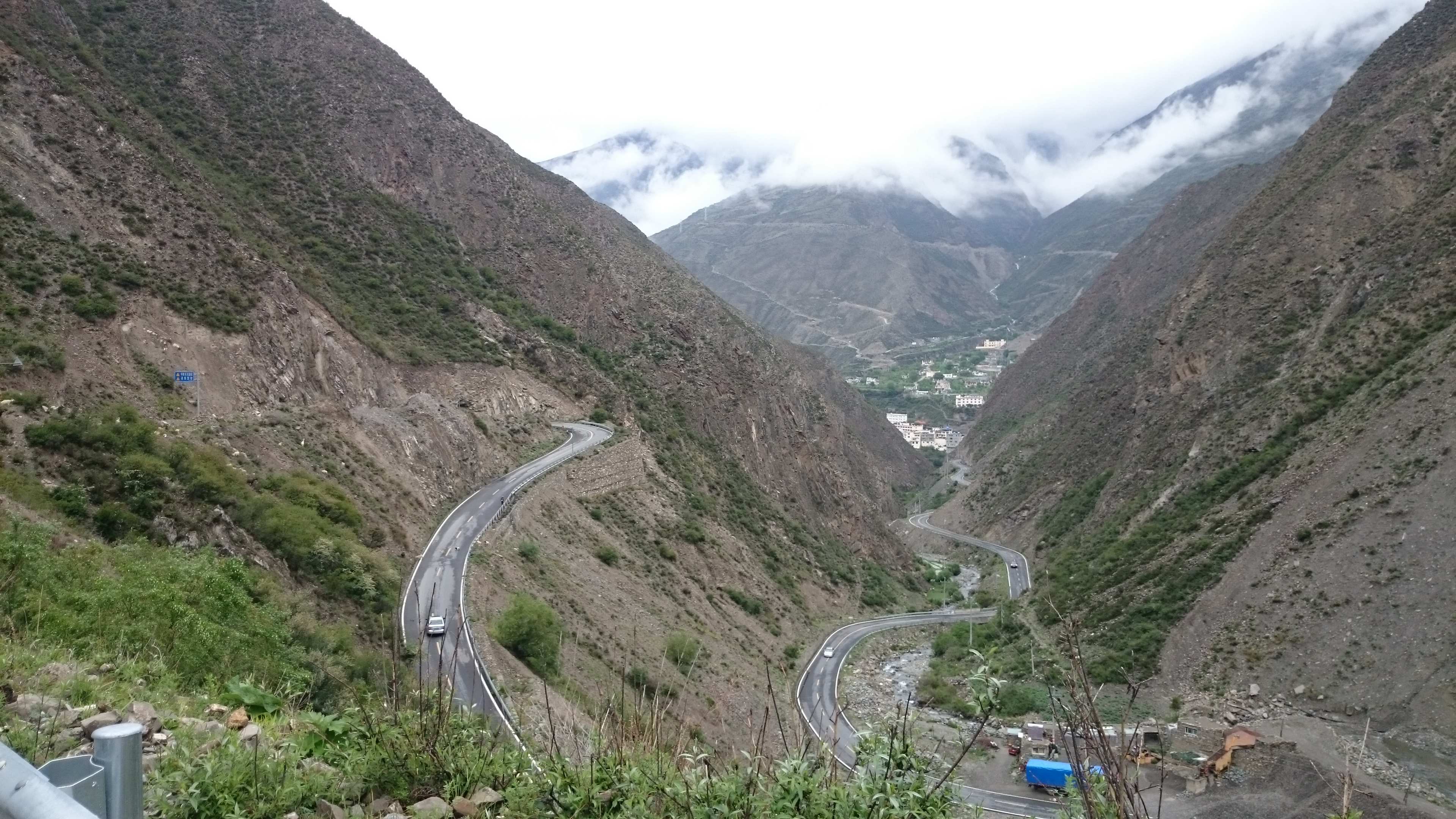
However, it did mean that it was straight into the climb from the get go. The task of climbing 1,400m was tempered by stunning scenery; from alpine lakes to pine forests and a lot of yak encounters.
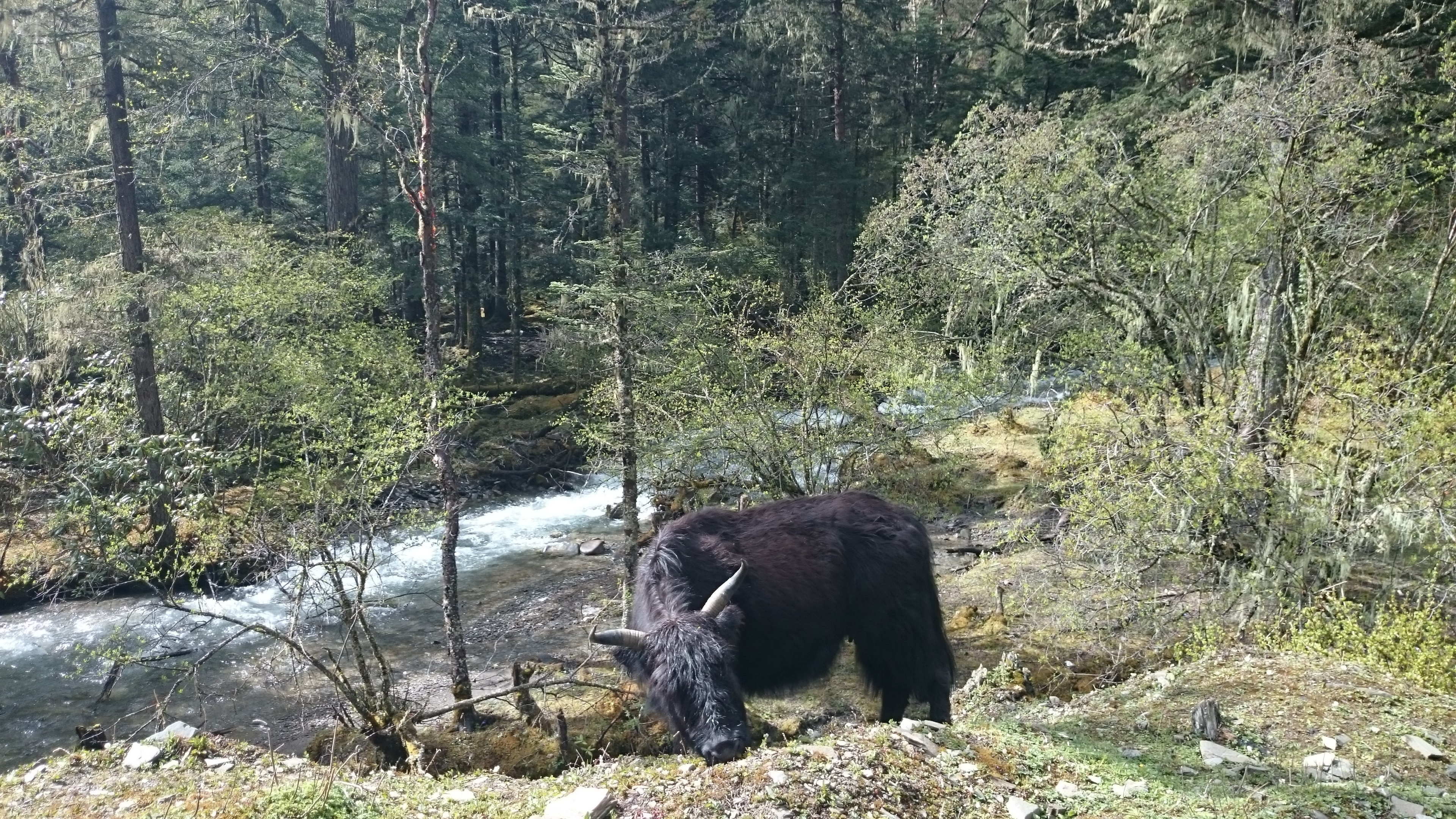
The architecture had also changed. Heading west over the Balang Shan pass yesterday, had marked the transition to the eastern edge of Tibetan plateau; as such Tibetan culture permeated everywhere. Daweicun a small village after 10km was typical of this.
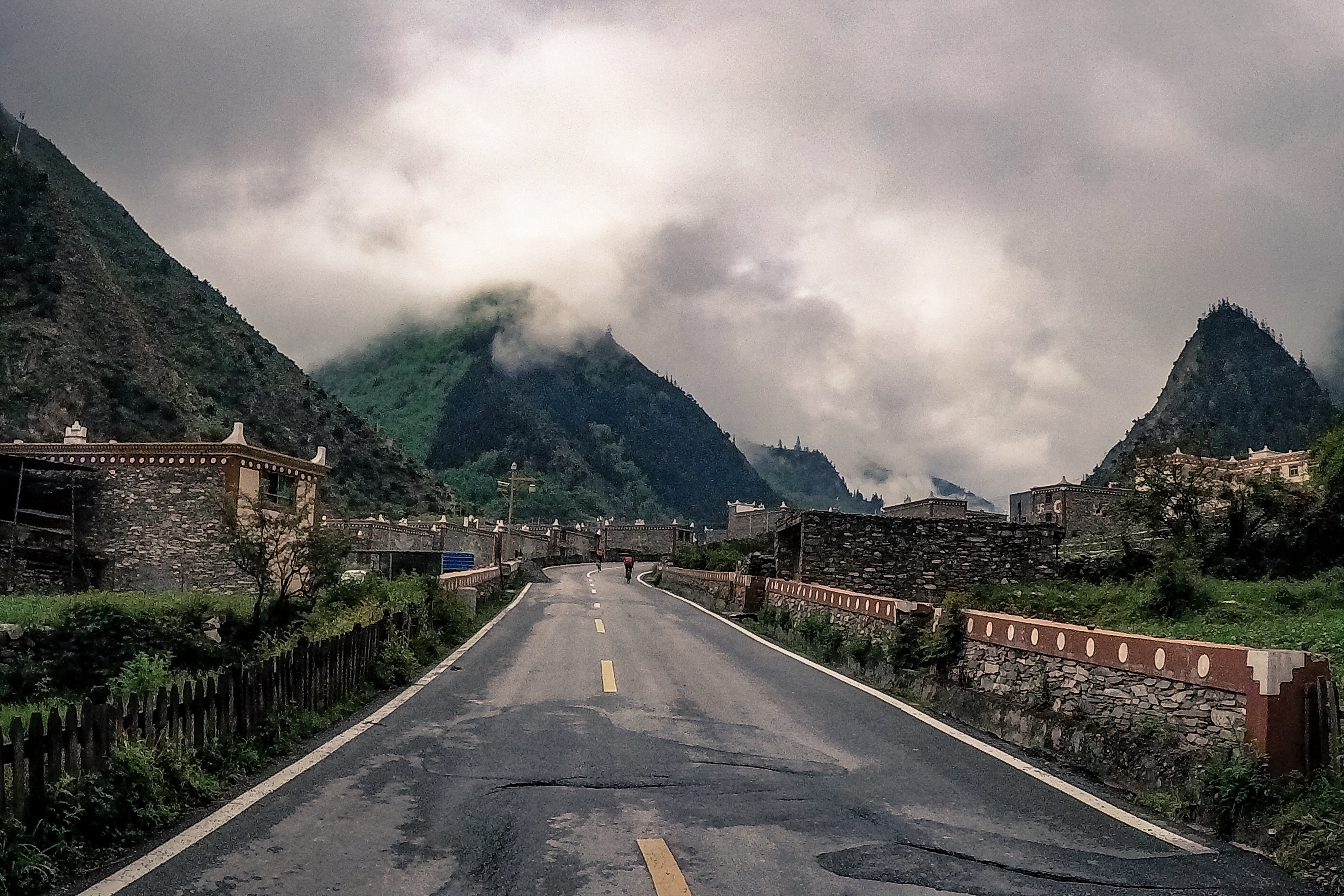
Although the climb was almost as high as the previous day, the fact that it wasn’t as high, coupled with great weather made for a more relaxing morning.
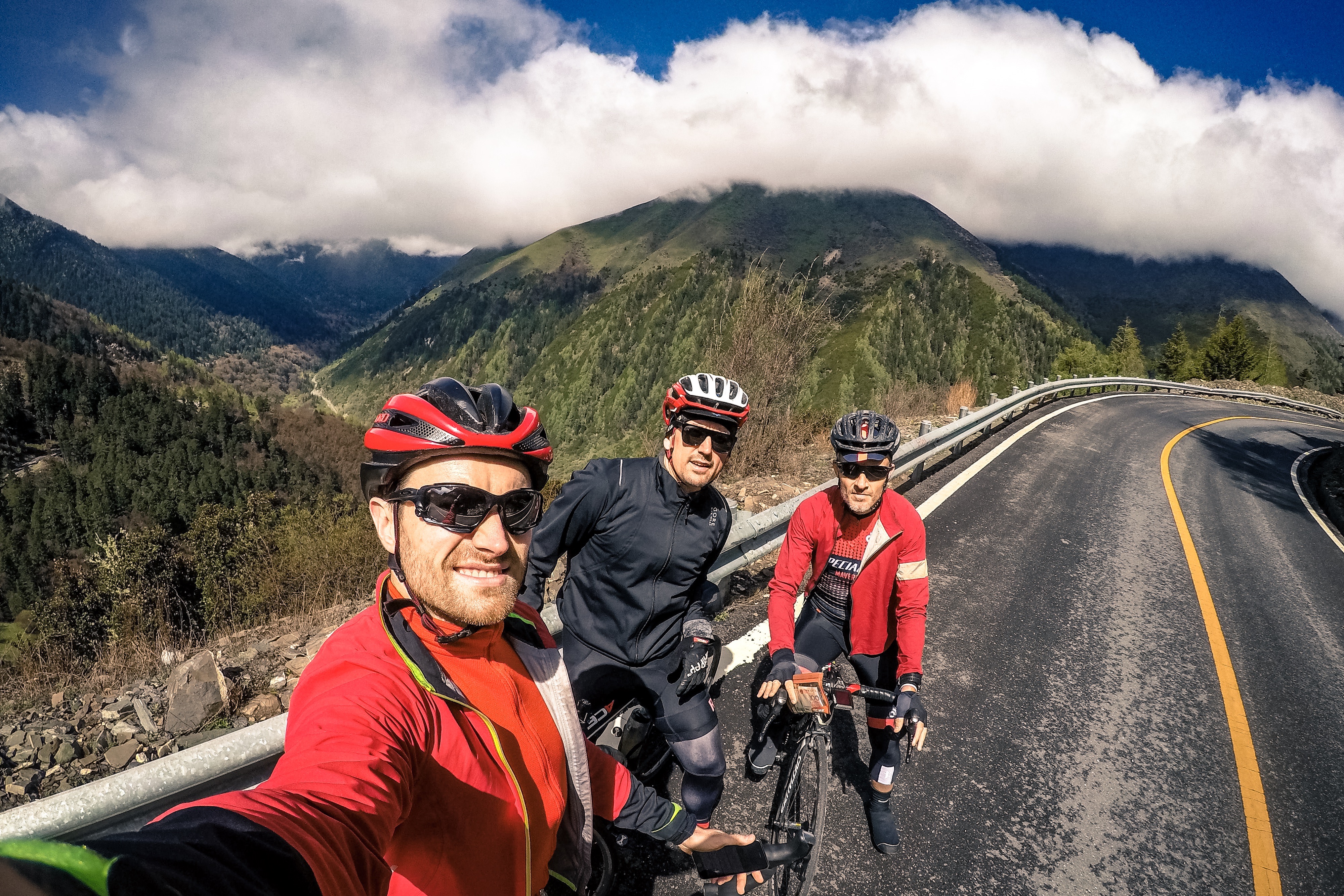
The clear skies afforded spectacular views of what lay ahead. Initially a steady climb, then longer switchbacks akin to the Alps, for the final 15km.

Whether it was lure of the kebabs, or the blue skies, there was a lot more energy abound as Jiajinshan was soon reached before lunch.
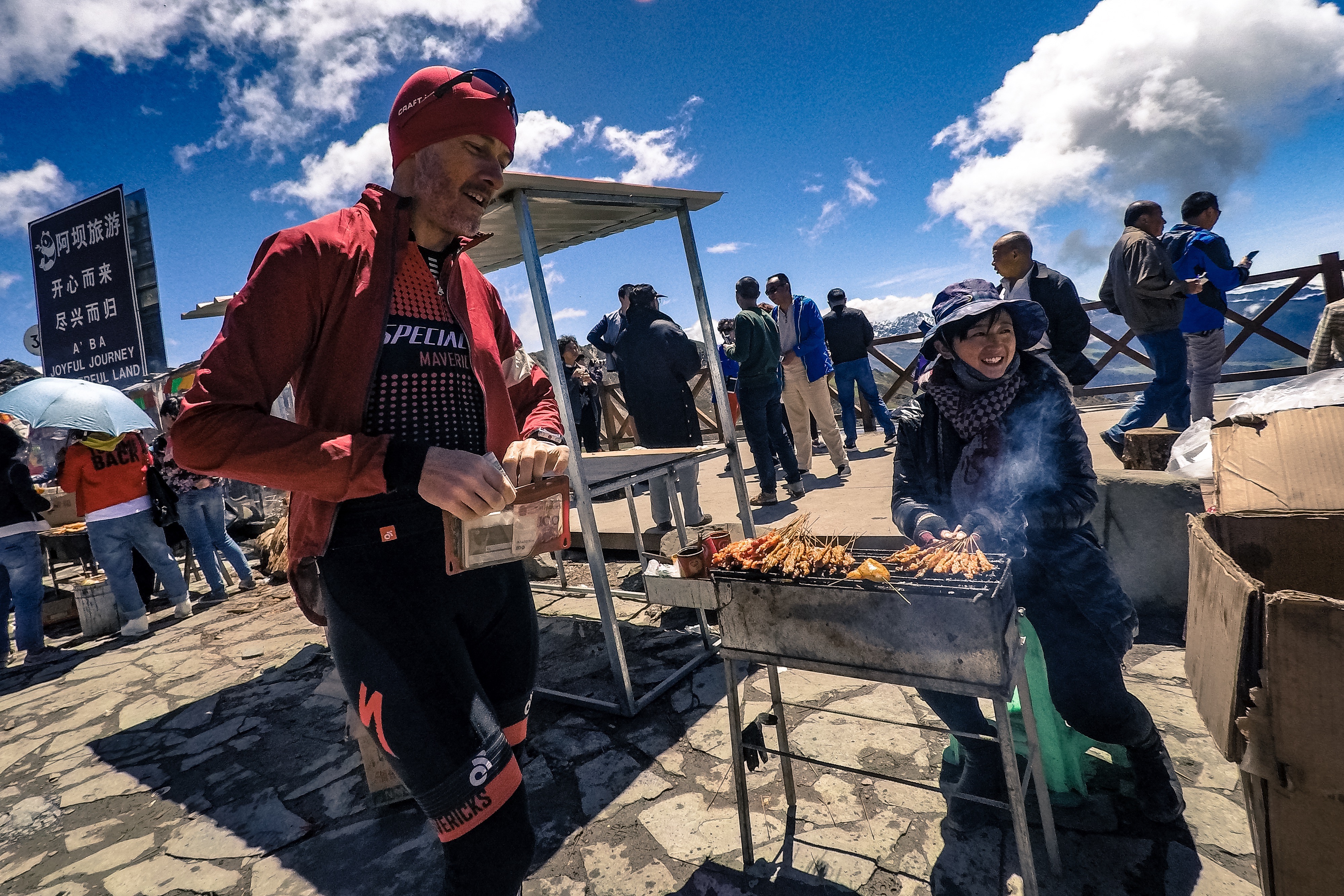
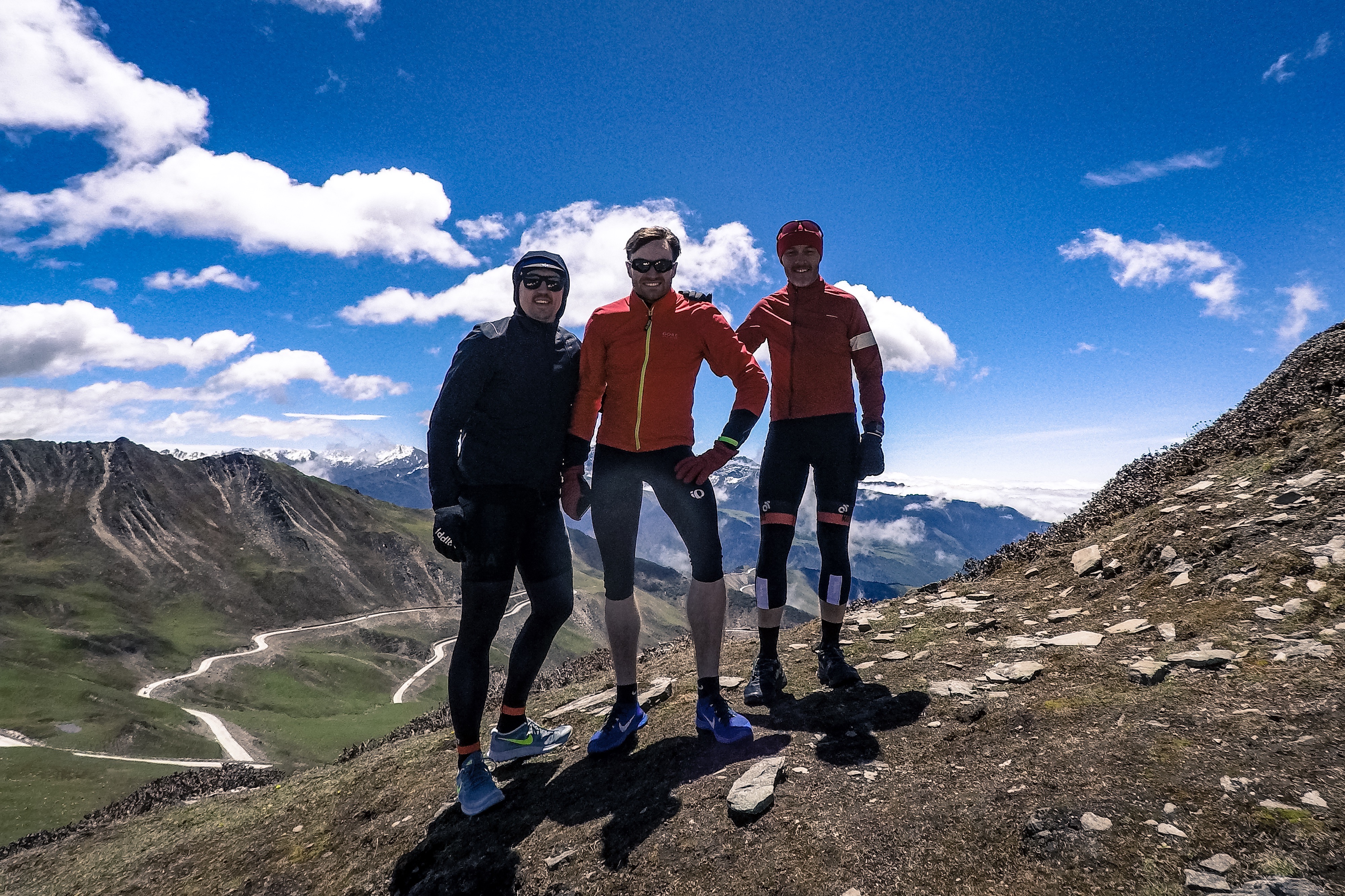
With 3,300m to be lost after lunch, there was much excitement about the prospect of an epic downhill. Unfortunately it was not to eventuate for the first 30km, with 1,500m of downhill lost to untarmaced concrete road.
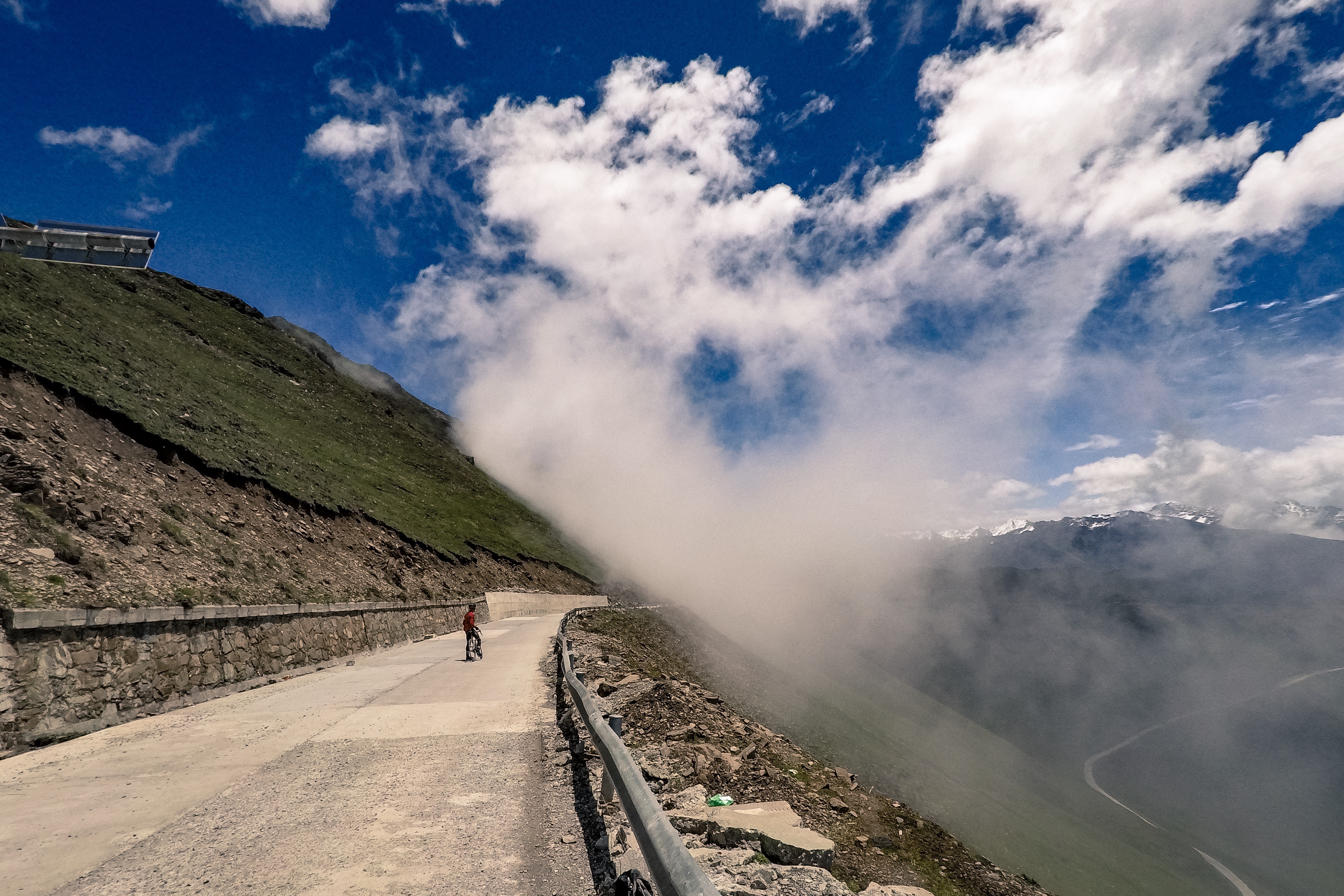
Fortunately the road improved after the second lunch stop and a downhill smashfest ensued into Boxing and Lushan.
Day 4 Lushan to Qionglai, 114km, 1500m
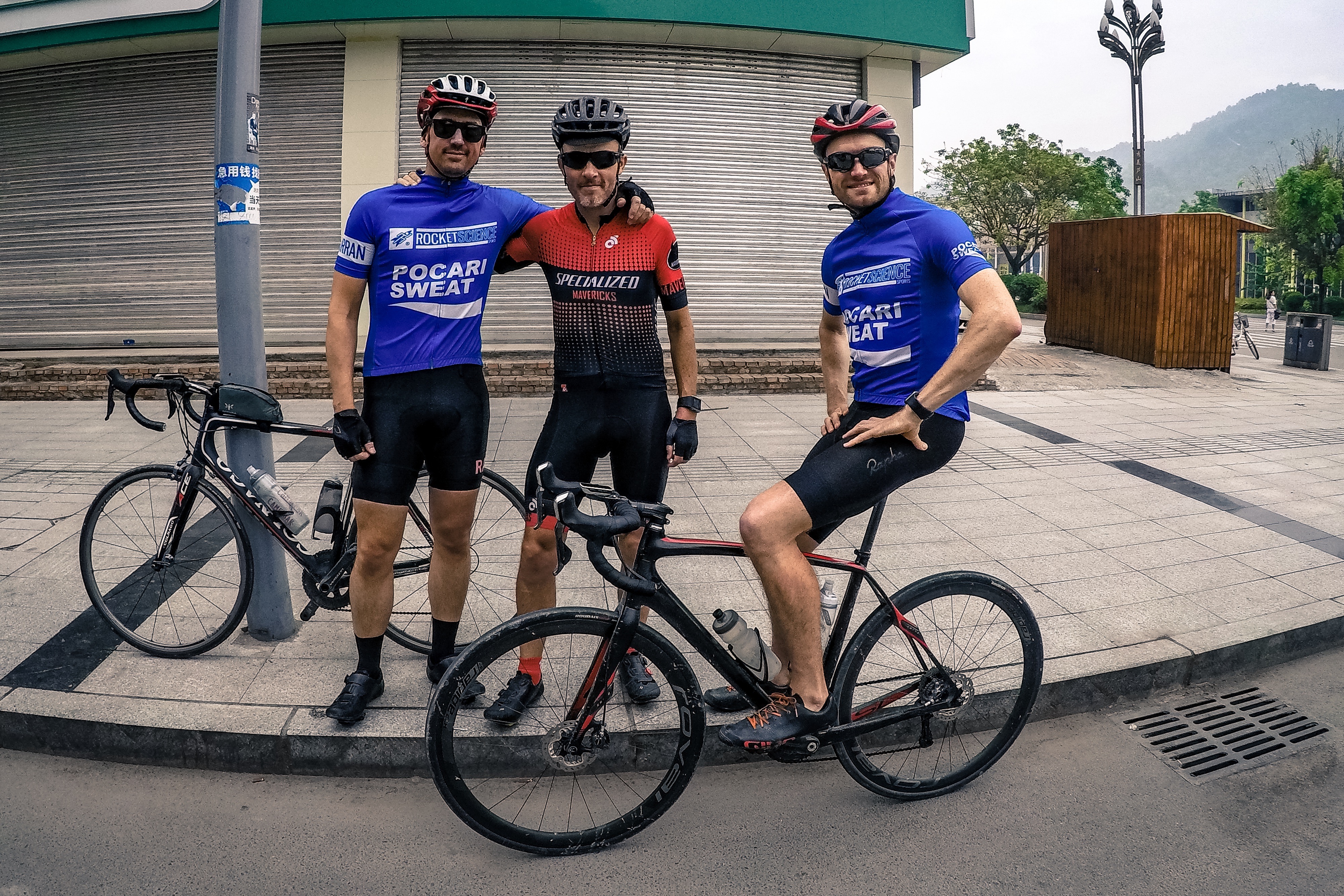
Alex had dutifully mapped out a final day route back to the outskirts of Chengdu; including a road which did not seem to exist on Google. The level to which the trip had spoiled everyone was also evident. A climb up to the 1,400m peak of Nanbaoshan, which many people in Shanghai would travel 3 hours for, was nonchalantly considered a filler for this final day.
Fortunately the elusive road had featured on Baidu, so there was confidence that it wouldn’t be a completely pioneering day. As ever Baidu proved correct.
A cheeky little climb, albeit on a badly maintained road, was a nice sharpener for the morning, before embarking on the main climb up to Nanbaoshan just before lunch.
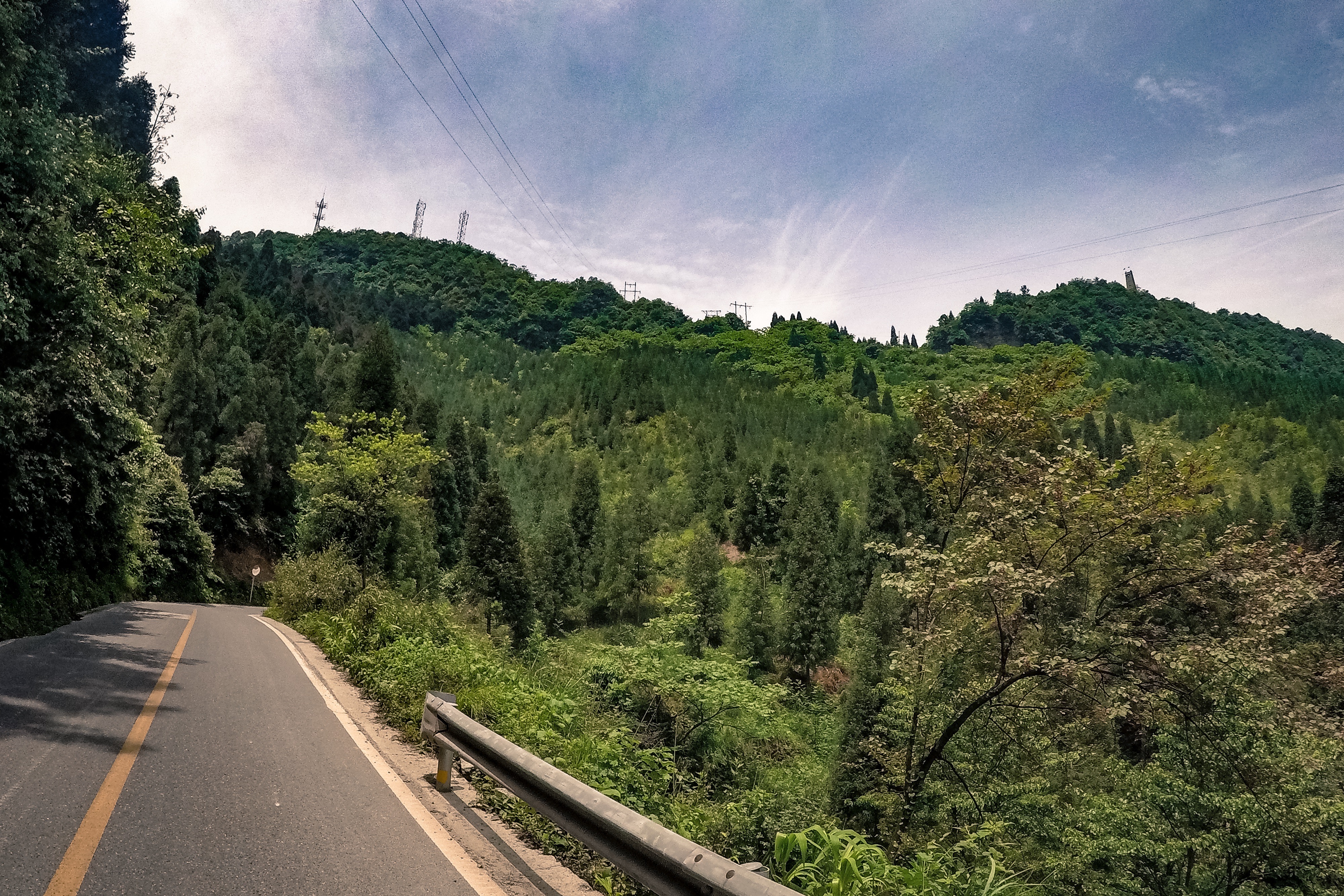
Nanbaoshan proved a great spot to wrap up the trip. A decent climb at 14km, with some sharp sections to deal with, but no altitude considerations to manage. A Qing dynasty fort sits on top of the hill, which with it being the last day of the long weekend was proving a big drawcard for the SUV drivers of Chengdu.
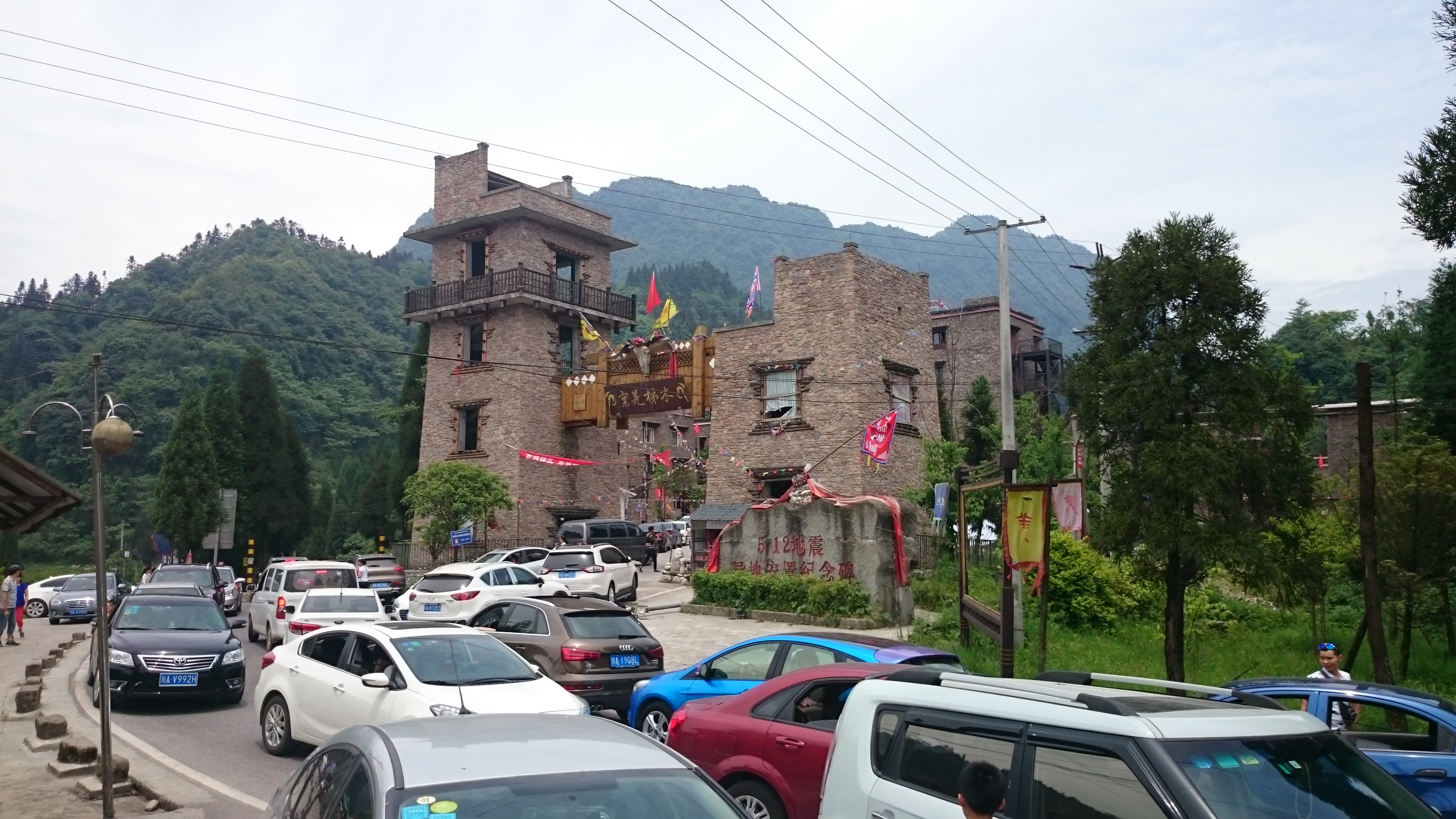
As a result the downhill could not be exploited for all it’s worth, for fear of head to head encounters with the many vehicles taking blind corners as they climbed up.
Lunch and a final section into Qionglai closed out the day. Bikes were packed, KFC coffee was procured, remaining Haribos demolished and three satisfied riders headed to the airport.
Photo credits and big ups: Sam

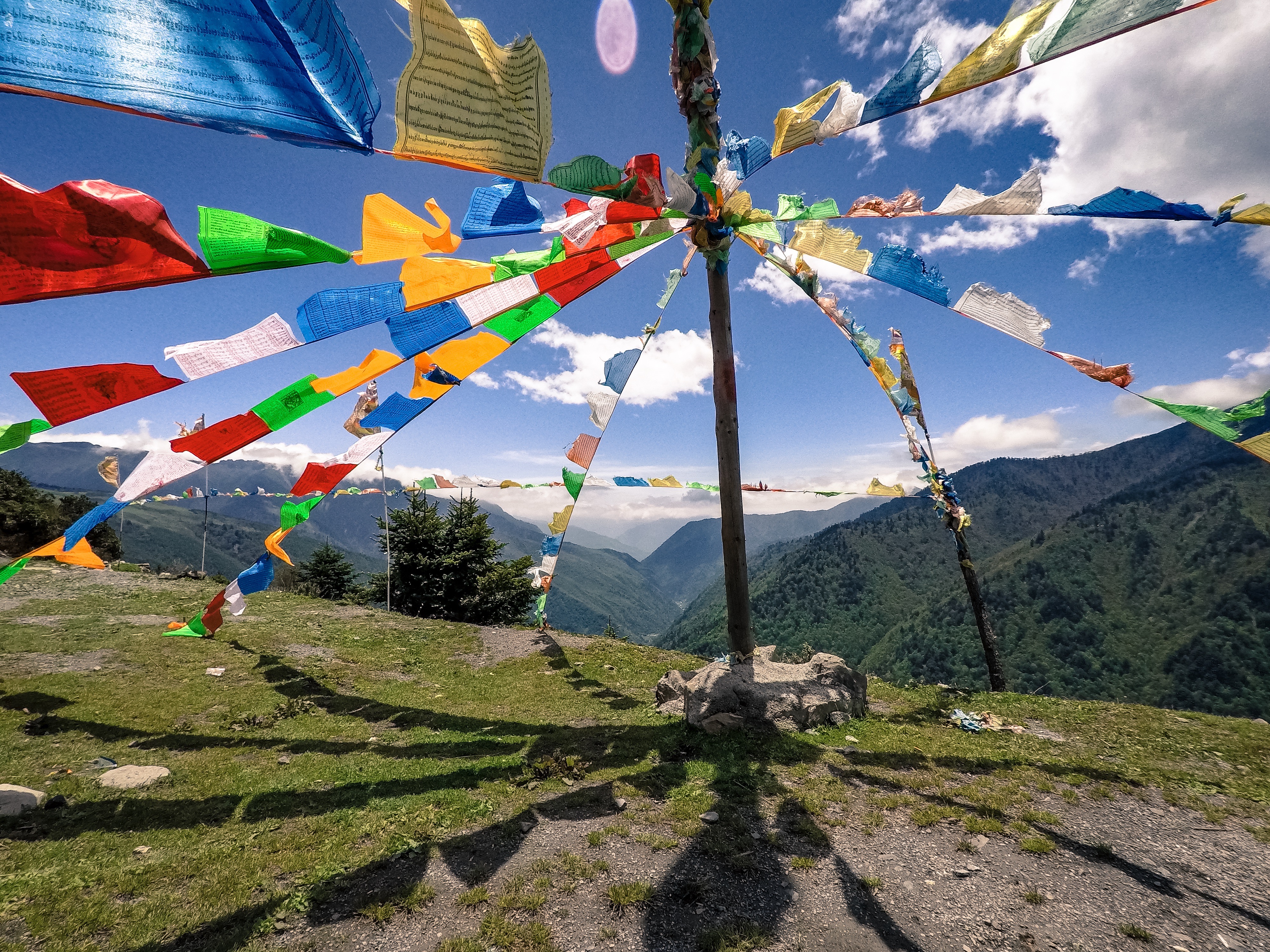
Leave a Reply
You must be logged in to post a comment.